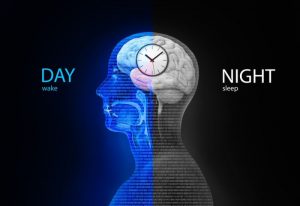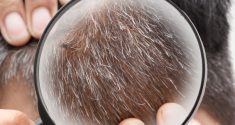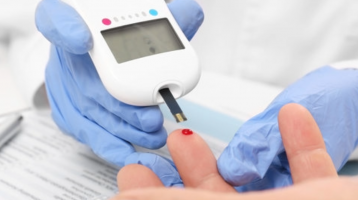A recent study conducted by University of California, Los Angeles (UCLA) researchers, offered interesting results concerning changes in body temperature rhythms. Published in Chronobiology International, a peer-reviewed journal specializing in biological and medical rhythm research, the results of the study linked those changes in body temperature patterns to aging and disease. The connection between aging and some diseases may lie in changes and disruptions to the circadian rhythm as we grow older. The UCLA researchers used mice in their recent study, as do many researchers due to the many significant similarities, genetically and otherwise, between mice and humans.
Body Temperature Rhythms Changes Revealed by Study
 The researchers note the importance of circadian rhythms in the mechanical operation of the body and its systems and their role in the synchronization of the timing of actions and processes throughout the body, right on down to the molecular level. In mice, as with other mammals, including humans, core body temperature typically follows a rhythm over a roughly 24-hour period of time, operating under a circadian rhythm. As explained by researchers, of the numerous approximately 24-hour circadian rhythms at work within the body, the core body temperature (CBT) rhythm has a major role in helping to regulate circadian-rhythm-influenced actions throughout the body.
The researchers note the importance of circadian rhythms in the mechanical operation of the body and its systems and their role in the synchronization of the timing of actions and processes throughout the body, right on down to the molecular level. In mice, as with other mammals, including humans, core body temperature typically follows a rhythm over a roughly 24-hour period of time, operating under a circadian rhythm. As explained by researchers, of the numerous approximately 24-hour circadian rhythms at work within the body, the core body temperature (CBT) rhythm has a major role in helping to regulate circadian-rhythm-influenced actions throughout the body.
The researchers used three sets of mice to measure and compare the CBT rhythms of young mice, middle-aged mice and mice with a mouse model of Huntington’s Disease. The young mice in good health had CBT rhythms with distinct daytime and nighttime patterns. During the day, those mice maintained a relatively stable CBT, with a nighttime CBT rhythm that featured a strong, distinct pattern of what was described as higher frequency oscillations. Interestingly, the older mice and the mice with Huntington’s Disease did not exhibit such a pattern. In fact, in those two groups, the difference between day and night CBT rhythms over the 24-hour period completely disappeared, according to the research team.
Research Professor of Medicine and Integrative Biology and Physiology Alan Garfinkel was part of the research team for this study. While the impact of aging on circadian rhythms has been well established in other studies and there is evidence of a link between aging and body temperature, Garfinkel pointed out that there may be an association between the disruption of the CBT rhythms – an important circadian rhythm – and the state of being diseased, perhaps even as a marker of a current or impending health issue. That is a fascinating observation, considering the role of temperature in immune function and the importance of circadian rhythms in the overall health and functioning of the immune system as a whole.
Use What You Know to Protect and Improve Health
The value in learning about these types of studies is that they contain actionable information you can use to preserve and improve your overall health and well-being. Recognizing the changes that aging can bring to such things as your circadian rhythm and core body temperature rhythms provides you with a valuable opportunity to proactively protect your circadian rhythm health. Knowing that as you age, the odds are that your circadian rhythms will shift to earlier rising and earlier sleep times, try to adapt your lifestyle to accommodate that change, avoiding sleep deficits and poor sleep quality while promoting circadian rhythm health.
Other ways to promote circadian rhythm health have to do with creating a regular rhythm to your life, in terms of waking, sleeping, eating and physical activity. By keeping regular hours and a regular routine, you train your body and mind in habits that help promote a healthy circadian rhythm. If you go to bed and wake up at the same time each day, you’ll naturally start feeling tired and waking up at the right times and may even be able to get rid of your alarm clock. If you stick with a meal schedule and good meal planning, you’ll be hungry at the right times. Front load your calories, taking the bulk of them earlier in the day to fuel your active period. Never skip breakfast. Eat lightly in the evening. It promotes better sleep.

Tip The Scales in Your Favor
We can’t avoid all of the changes of aging – yet – but we can take simple, health-enhancing, circadian-rhythm-supporting steps to help mitigate the challenges and damages time can bring. Tip the scales in your favor by being proactive and making smart use of what you know.







